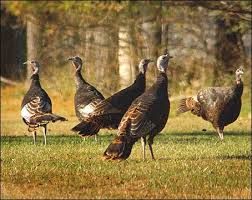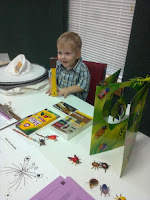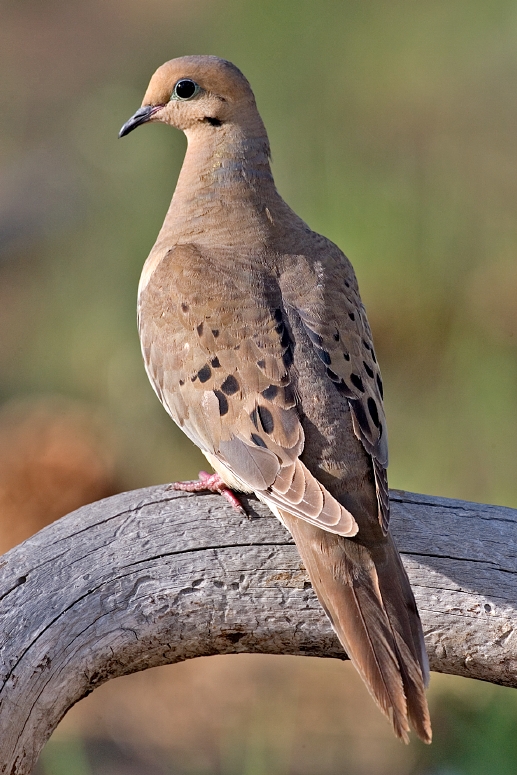Today I am going to talk to you about...
The bird Benjamin Franklin wanted to represent our country...NO!!!...not the bald eagle...but the...
WILD TURKEY!
Yes, that's right...in a letter to his daughter during the time our country was forming Benjamin Franklin wrote:
"For my own part I wish the Bald Eagle had not been chosen the Representative of our Country. He is a Bird of bad moral Character.”
“For the Truth the Turkey is in Comparison a much more respectable Bird, and withal a true original Native of America... He is besides, though a little vain & silly, a Bird of Courage, and would not hesitate to attack a Grenadier of the British Guards who should presume to invade his Farm Yard with a red Coat on."
(To read more from this letter click on his name above.)
So, why all this talk about a silly bird? Today we had a great presentation from one of our younger members (Briana) about the wild turkey. This is one of our key animals on our local wildlife contest. Here are a few of the highlights from our meeting:
General Information:
 Male Turkeys (Gobblers):
Male Turkeys (Gobblers): About 4 feet long, including tail
Breast feathers have black tips
Female Turkeys (Hens):
About three feet
Breast feathers have brown tips
Turkeys live in open woodlands and forests with lots of clearings and meadows.
Wild turkeys travel in small single-sex flocks most of the year.
Wild Turkey have good eyesight and hearing, and they are fast runners.
They roost in oak and pine trees at night.
Food:
Insects, spiders, snails, slugs, salamanders, small lizards, frogs, snakes, worms, grasses, vines, flowers, acorns, seeds, berries, and more!!!
Breeding:
March-April
One male with 3-10 female in a 'harem'
Male will gobble and strut and gain attention by fanning out his tail
Nesting:
Nests made in ground, lined with leaves and vines
10-15 eggs, light brown with black or dark brown spots
Predators:
Raccoon, Red fox, Skunk, Crow, Snake, Opossum, Chipmunk, and Squirrel
Management Recommendations:
Habitat should include clearings where insects can be captured and 10% of the woodland area should be maintained in scattered openings to provide optimum foraging.
Disking small areas to maintain some perennial forbs, grasses, and shrubs
Use controlled prescribed burns every 3-5 years in shrub habitats.
Clear cut 10-20 acres in large expanses of young and mature woodland or trees.
Perennial food plots to native grasses and legumes in large expanses of shrubs and young woodlands where food is limiting.
Plant native mast crop trees.
Eliminate fall tillage of grain crops, especially adjacent to woodlands.
Leave small areas of grain crops unharvested.
Manage livestock.
Great websites to learn more about wild turkeys:
Plants for our contest related to Turkeys:
American Beauty Berry
Annual Sunflower
Arrowleaf Clover
Bahia Grass
Beech
Black Cherry
Black-gum
Blueberry
Crimson Clover
Croton
Dewberry
Dogwood
Elm
Grapes
Hackberry
Lespedeza
Partridge Pea
Persimmon
Plum
Post oak
Prickly Ash
Rye grass
Smartweed
Southern red oak
Sumac Little Leaf
Vetch
Water oak
Western Ragweed
White Clover
White oak
Since this turned out to be another long post about our featured animal of the week, I will save the information about habitat evaluation and management practices for tomorrow.













































 OOPS!!!
OOPS!!!



